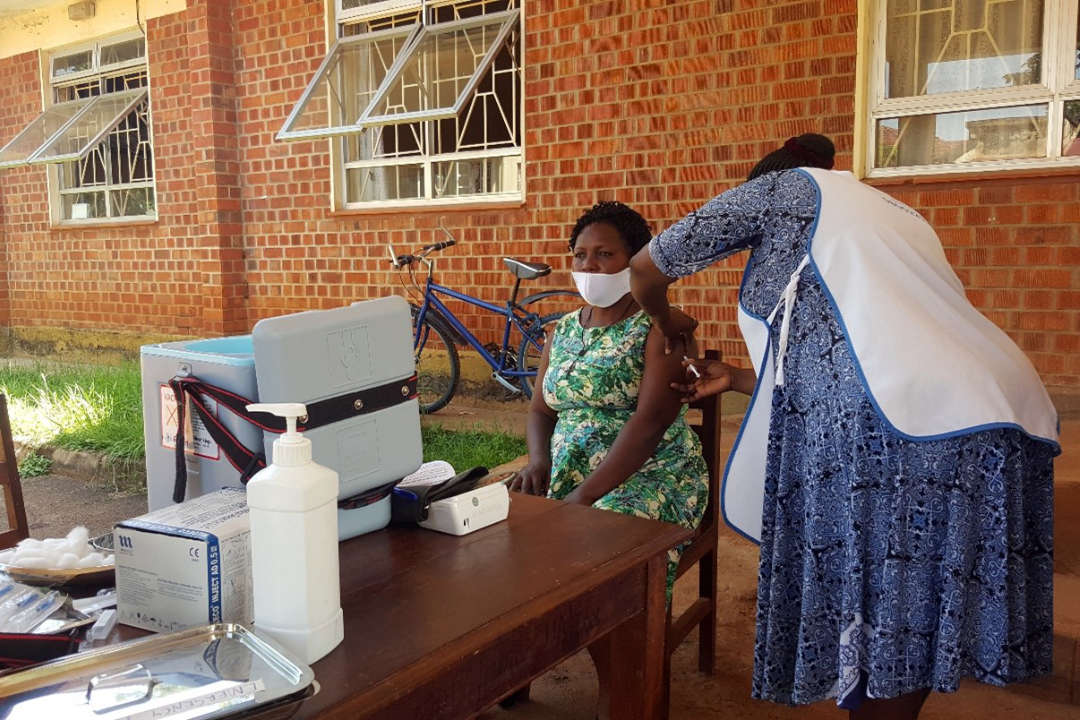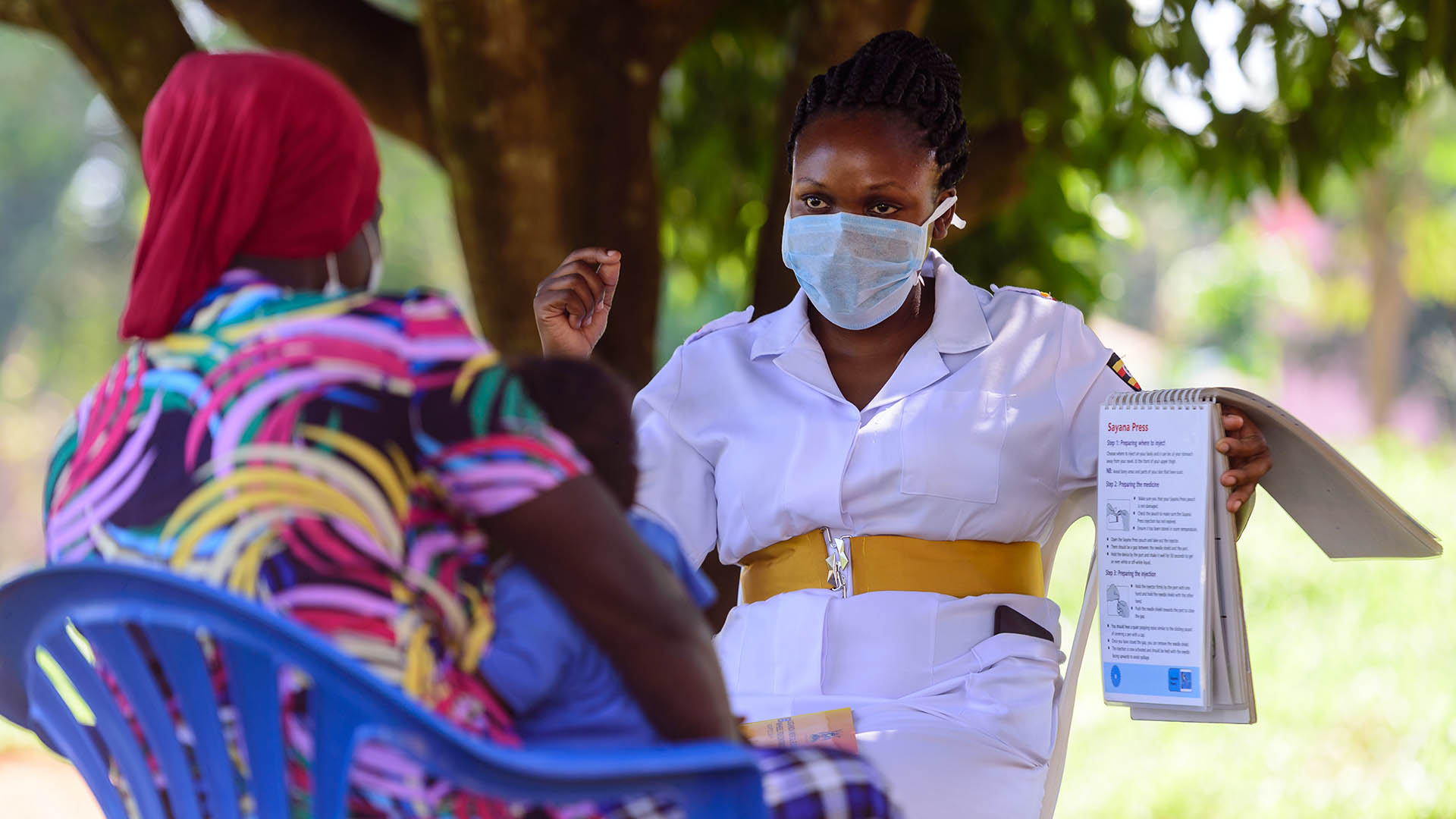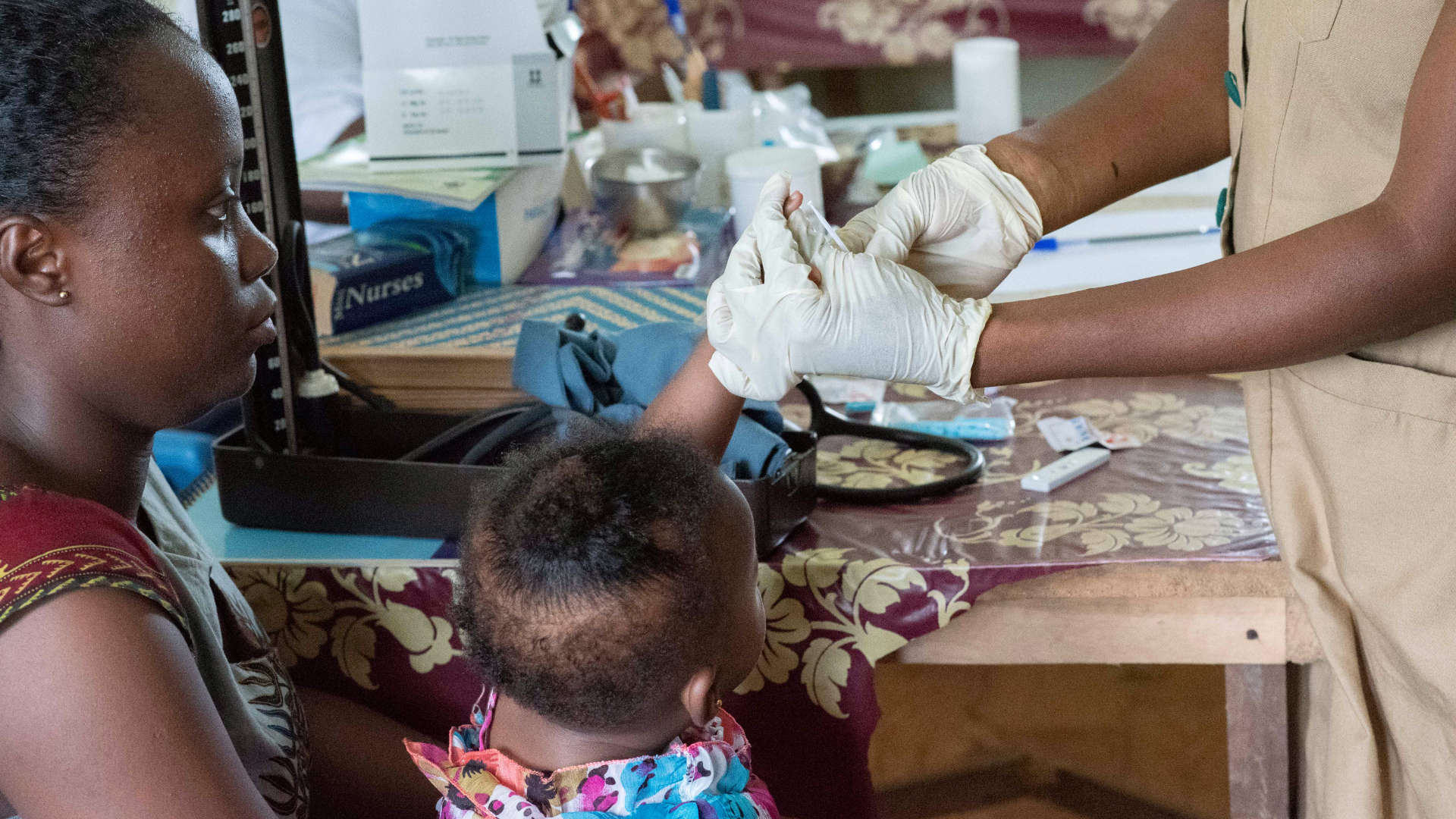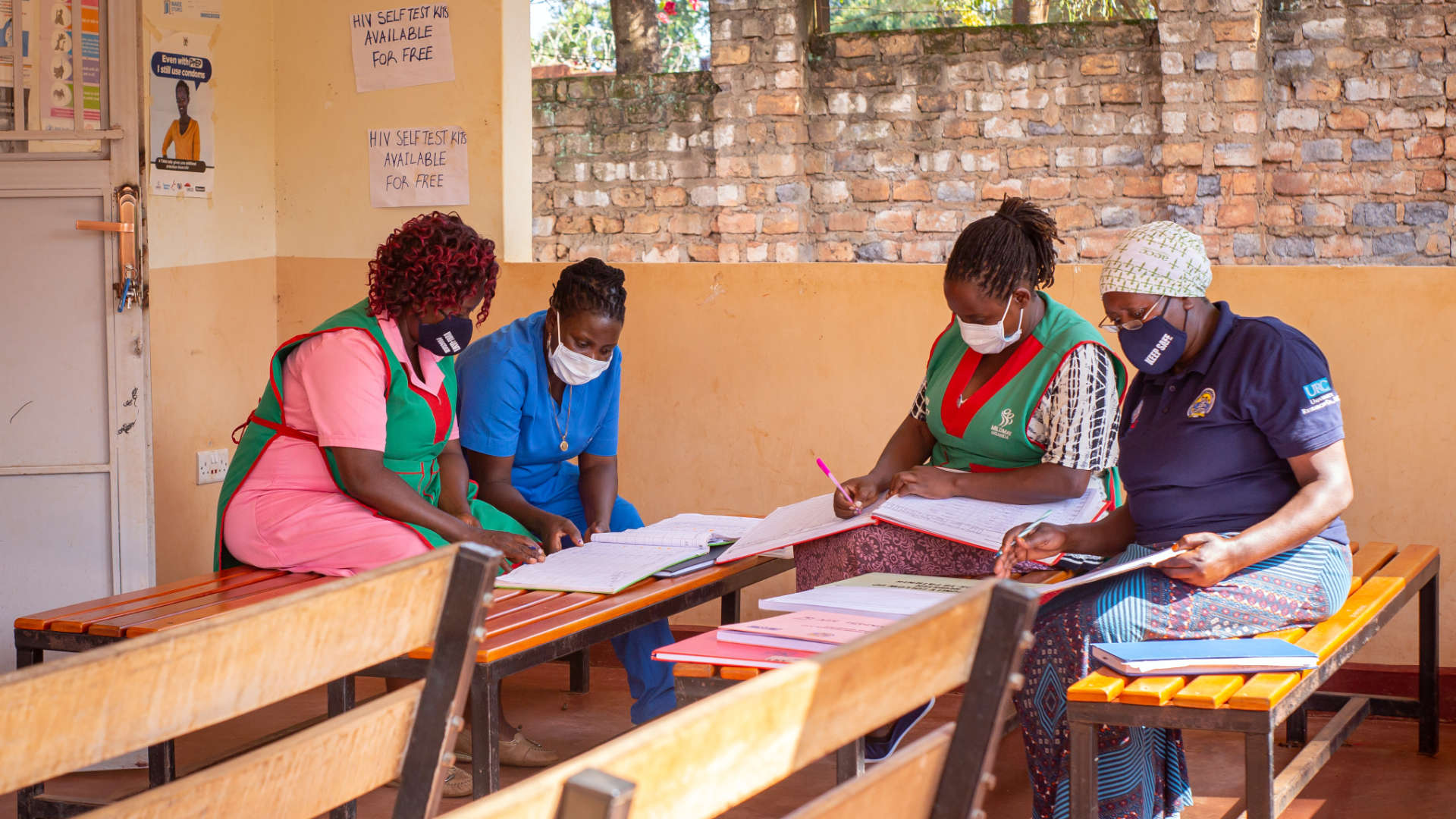Uganda received its first shipment of 864,000 doses of the Astra Zeneca COVID-19 vaccine from the COVAX Facility on March 6, 2021. With a limited number of vaccines, the initial COVID-19 vaccination campaign prioritized most at-risk individuals by occupation ̶ mainly health workers, teachers, and security personnel.
But initial excitement about the vaccine’s arrival soon gave way to frustration after one month when it was revealed that only 10% of the vaccines received had been administered. A negative campaign against vaccines, mostly on social media, had contributed to vaccine hesitancy.
“I heard on the radio and read on social media that these vaccines are not good and the people that get them would die,” says Aggrey Babise, 41-year-old nurse in Buyende District.
Aggrey held back as he watched co-workers get the vaccine. He attended a session for the vaccine-eligible about vaccine side effects, development, and efficacy. After the information session, Aggrey was ready to get the shot and experienced minimal side effects. Twelve weeks later, he received the second dose of the vaccine without any major adverse side effects. Aggrey’s decision to get the vaccine was not easy given the barrage of negative information about the vaccine all over the country via radio and social media.
Getting Shots into Arms
In April 2021, the Ministry of Health (MOH) brought in partners – including the USAID Regional Health Integration to Enhance Services in East Central Uganda (RHITES-EC) Activity – to accelerate vaccination efforts.
“It was challenging at first,” said Dr. Juliet Ajok, RHITES-EC Child Health Technical Advisor. “Health workers were exposed to a lot of misinformation about the vaccine, as well as news from Europe about the potential dangers of blood clots. The timing was difficult.”
When RHITES-EC began work with the vaccine rollout in April, all 12 supported districts were performing poorly. All but one district had less than a 20% uptake of their vaccine allocations among eligible persons – at that time, health workers, teachers, and the armed forces. The vaccine expiration date of early July 2021 accelerated the need to increase uptake quickly to avert vaccine wastage.
RHITES-EC acted immediately to implement a multi-pronged approach to increase vaccine uptake. Activities focused on expanding eligibility and access, increasing community engagement, and carrying out social and behavior change and communication campaigns. The activity worked with the MOH to expand eligibility to those over 50 years of age, other essential social workers, and individuals with co-morbidities.
Critically important was the expansion of access to vaccination. In collaboration with the MOH, the RHITES-EC team successfully scaled up vaccine sites from only five sites per district at major health facilities to include many lower-level health facilities. This was combined with integrated outreach activities in hard-to-reach areas. Vaccine uptake increased. For example, more than 150 eligible people were vaccinated in one day at the Buwologoma Health Center II in Luuka District.
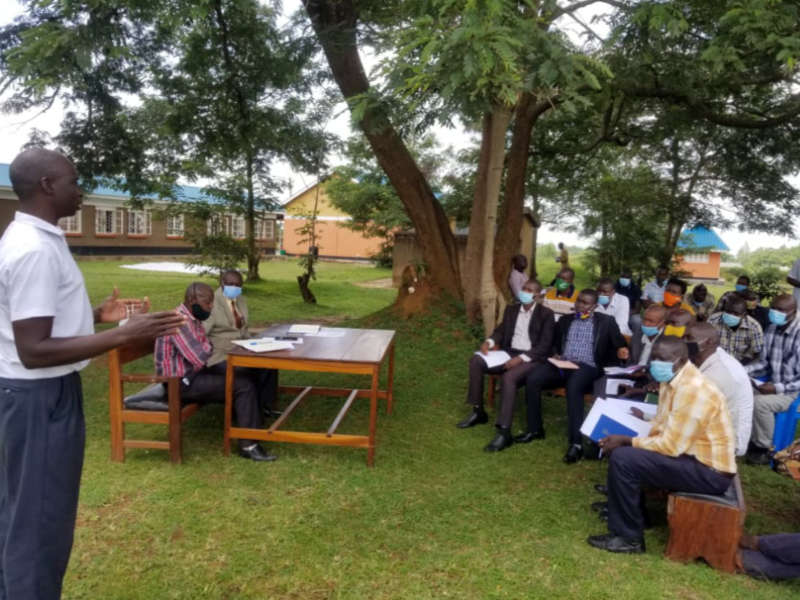
Addressing Vaccine Misinformation
RHITES-EC and district health teams facilitated dialogues with health workers to hear their concerns and address their fears about the vaccine. The dialogues led to the development of risk communication materials for health workers and the public. Spots ran on radio stations under the campaign slogan Kijja Kuggwa, local dialect for “It will come to an end,” reaching more than two million people in the region.
“We were unprepared for the wave of propaganda on COVID-19 vaccines,” said Mathias Mangene, Acting District Health Officer, Namayingo District. “Myths well-packaged as scientific evidence hindered health worker vaccine uptake. RHITES-EC took quick action and enlisted risk communication agents to dialogue with health workers and demystify the vaccine. This created behavior change and contributed to increased demand.”
Community leaders reported a positive change in attitudes towards vaccination following an extensive social behavior change campaign.
“RHITES-EC provided community leaders with extensive training in risk communication,” said Ifambiro Chrispus, a community leader from Kamuli District. “This has enabled us to build rapport quickly and easily with the communities we mobilize for vaccination. We can now confidently address myths, fears, and concerns raised with members of the community.”
Enlisting Key Community Members as Advocates
Community mobilization efforts and social and behavior change activities were carried out along with the expansion of access. Enlisting the support of sub-county chiefs helped mobilize rural communities.
“People really listen to the chiefs and political leaders. If they take the vaccine and tell others to do so, people follow their example,” Dr. Ajok said. “Political leaders and district health officers (DHOs) help foster local government accountability for poor vaccine uptake performance. Together with our team, DHOs mobilized teachers and other eligible groups, analyzed data, and proactively promoted vaccine uptake by poor performing districts. They also engaged village health teams to interface directly with communities to bring residents in for their shots.”
Documenting Vaccine Rollout
Robust data and coverage monitoring systems were put in place to ensure effective documentation and reporting of the vaccine rollout through use of DHIS2 and ODK open-source software systems. Efforts were made to ensure that vaccinated individuals received a vaccination card. Tablets were provided to facilitate timely data entry by health facilities.
“RHITES-EC built capacity of the district health data managers to synchronize data from all government agencies reporting on COVID-19 vaccinations,” said Acting District Health Officer Mangene.
Efforts Pay Off
After only one month of interventions, vaccine uptake in all 12 districts increased dramatically ̶ from 32% to 94% in Bugiri District, from 19% to 93% in Buyende District, and from 17% to 80% in Namayingo District. By June 1, nine of the 12 districts had used all available doses and all 12 districts achieved full usage before the vaccine expiration date.
With the lessons gained in scaling up vaccination from April to June 2021, the districts of East Central Uganda are poised to ensure rapid vaccination uptake going forward.
